7 ways to organize your dishes and maximize your kitchen storage
How to get your kitchen to work smarter, not harder
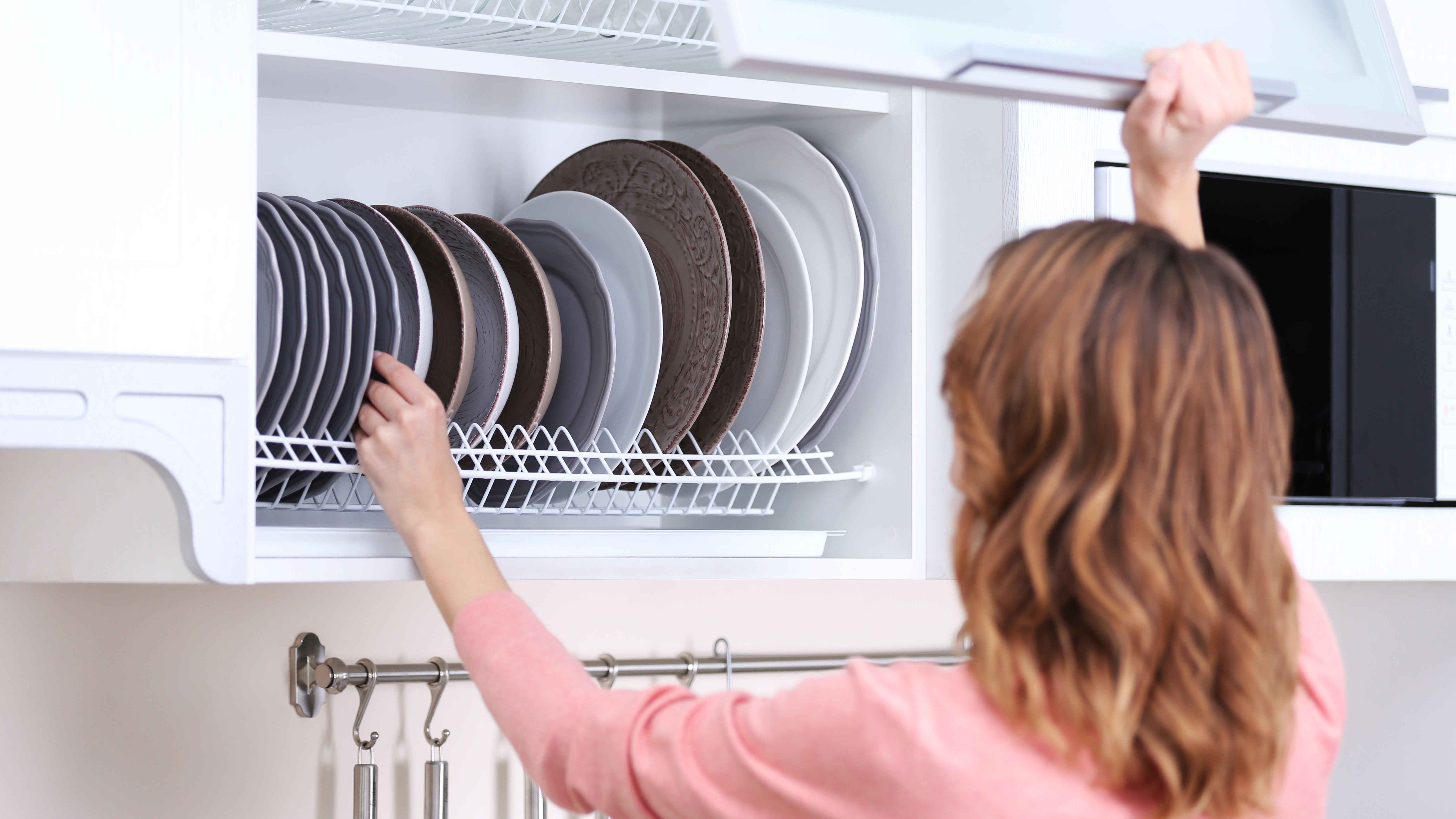
Dirty dishes are the bane of every household, but even clean dishes can create a headache when it comes to organizing your kitchen space. Add mugs to your selection of bowls, plates and cups, and you’ve likely got an impressive array of crockery – and not necessarily the space to store it all. The first step is simply to pare down your collection, removing any items that never get used or that have cracked or chipped beyond repair. But what then? For many of us, there’s still an assortment of servingware to stow.
Fortunately, you don’t need to part with beloved china or renovate your home to find the right place for all your items. It’s likely there are pockets of underutilized space throughout the kitchen, which can be easily converted into storage with a few tricks and tools. While some rarely used dishes might be better off if they’re packed up carefully and stored out of the way, you will still want to have your everyday crockery within easy reach.
These seven tips will help maximize the existing space you have and make your kitchen more organized so that you can delight in your dishes, not despair.
1. Organize by stackability: Group like-items together
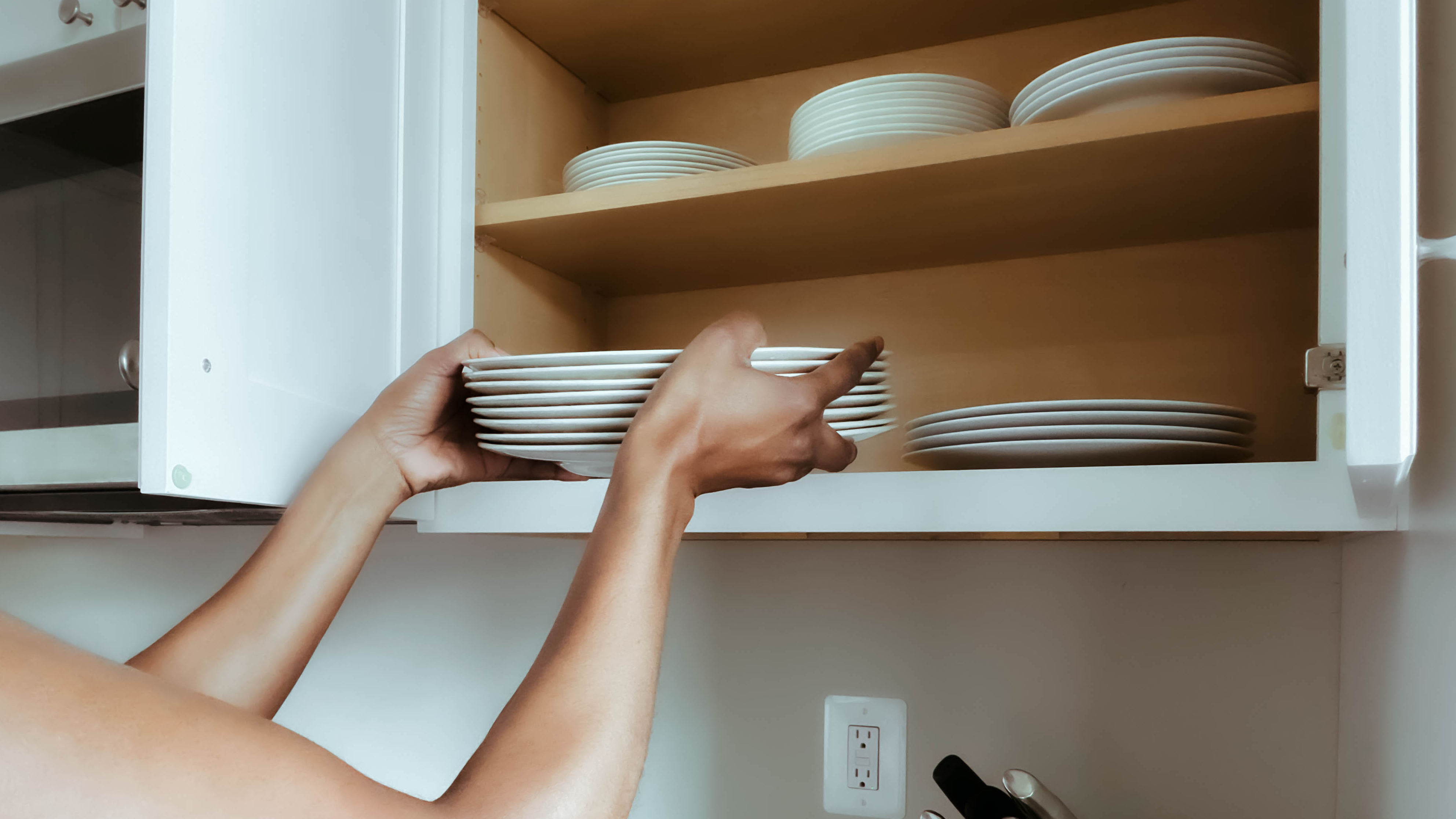
This may seem obvious, but it’s both free and easy to do. Save cabinet space by stacking your same-size dishes together, which also makes it easier to find the right size for your serving needs.
Crockery is usually sold in sets for this very purpose, but it also tends to come in standard sizes so that plates or bowls that were bought separately may still be stackable together. If possible, create stacks that are uniform in height so you can clearly see how many of each type of dish you have. By grouping like with like, you can grab a stack at a time and know that everything will be uniform for your meal.
Be wary of creating too-high stacks that may topple over or put too much strain on the supporting shelf. The material of your dish will also impact how many items should be stored on top of each other; heavy china should be used in shorter towers, to minimize the risk of breaking and make it easier to take out individual items. Remember, this method also extends to mugs and cups!
2. Use pegboards or dividers for items that won’t stack well

Perhaps you have a series of dishes that are uniquely sized or particularly heavy, or you have some crockery that features decoration that might be damaged by stacking. For these miscellaneous items, opt for a divider system or a customizable peg board that allows you to store your crockery sideways. These will still fit inside a cabinet or drawer, but allow you to make the most of lateral space. By placing dishes on their sides, you eliminate any chance of them slipping against each other and breaking. It also keeps them easily visible and accessible, with no need to remove items that might be resting on top of the plate you need.
Get instant access to breaking news, the hottest reviews, great deals and helpful tips.
Customizable boards are especially helpful for accommodating very small or large dishes, or a mix of the two. However, standard divider systems are also useful, especially if you have a large collection of plates to organize; plates have a much smaller footprint when stored sideways. Both methods are also a great solution for use inside of a sliding drawer, where items may move during opening or closing. The dividers or pegs will help to keep the crockery in place, minimizing the risk of damage.
3. Take advantage of prime cabinet locations
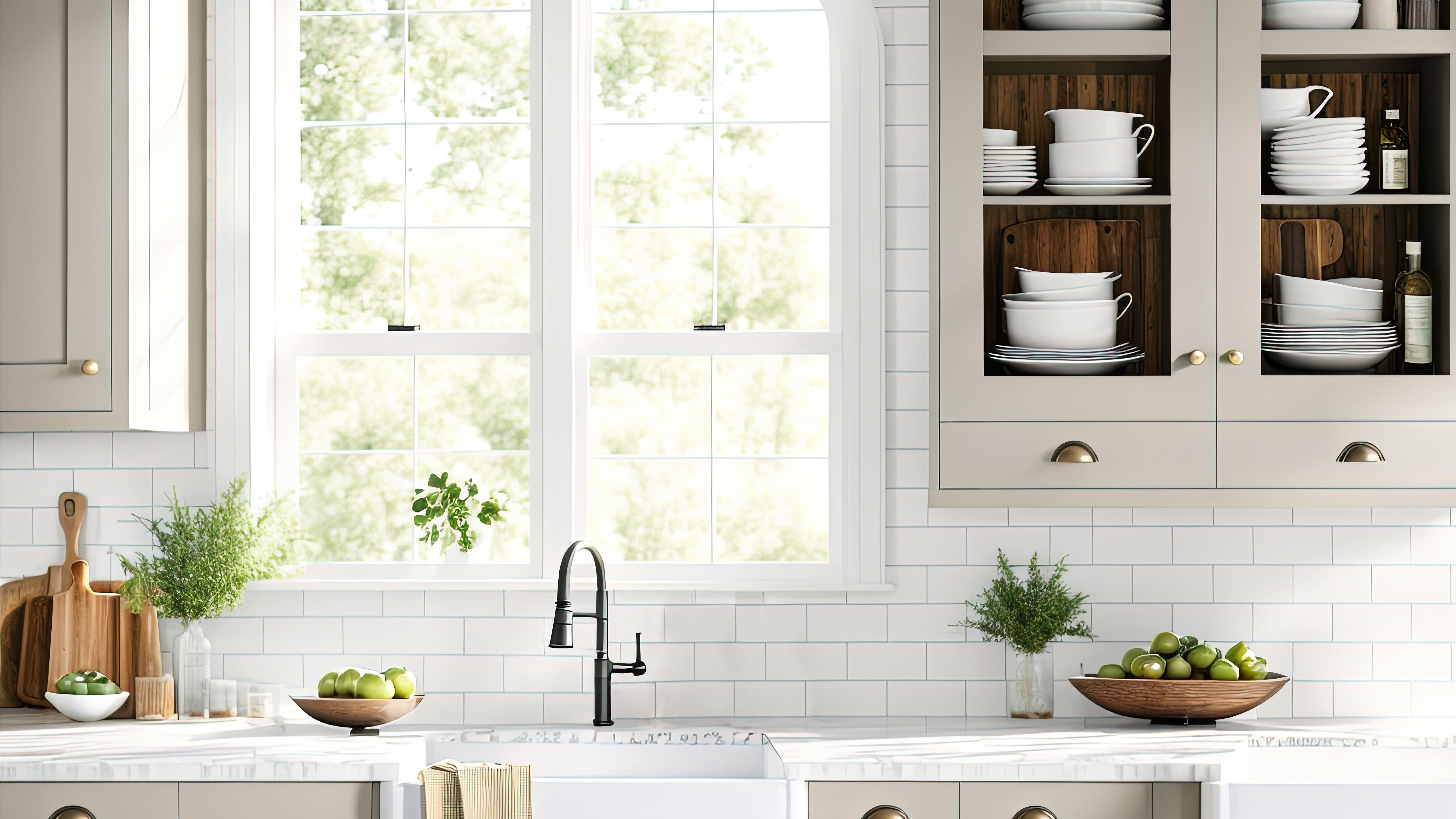
Making the most of your kitchen space isn’t just about fitting as much in as possible. It’s also about making it as convenient as possible for you to use the room. With that in mind, consider where you most often find yourself plating up dinner or organizing clean-up after a meal. Most likely, you are regularly based around the dishwasher, whether loading or unloading. Therefore, if you have nearby cabinet space, this is a great spot to store your everyday china. It will save you trips across the room and reduce the likelihood of a dropped mug or broken dish.
If you don’t have a dishwasher, you may want to utilize storage space near the sink. Or, if you frequently serve meals from a kitchen island or other spot in the kitchen, place your workhorse items within easy reach – perhaps inside the island itself.
Conversely, if you have some lovely crockery that you mostly save for special occasions, or bowls that you specifically use for just one purpose, then those items should be stowed in the cabinets that are trickier to reach or more out of the way. Organize your dishes in a way that supports how you eat day to day.
4. Adjust shelving heights or add risers for more effective storage
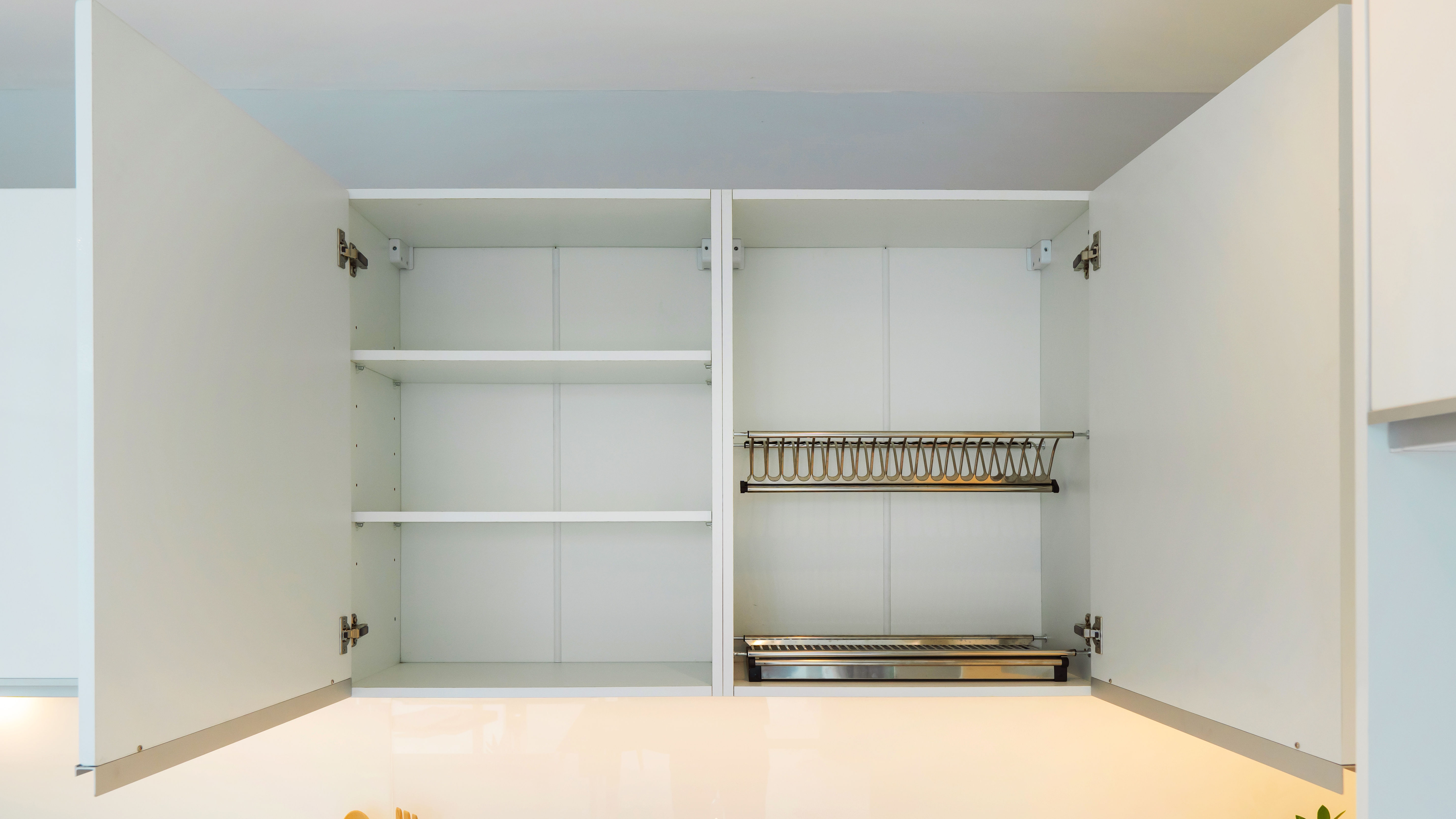
If you haven’t designed your kitchen cabinets yourself, then there’s a good chance that some of the shelving may be an odd fit for your particular items. Maybe you want to put your bowls on one shelf, but the space is too narrow to fit all of them. Or you’ve created a nice stack of plates on another shelf, but there’s all this empty space going to waste right above them. Sure, you can reorganize taller items onto taller shelves, but this won’t always solve the problem. In this case, take advantage of adjustable shelves to accommodate your precise needs – or create your own solution with risers.
Risers are a great solution for tall shelves that are used for a mix of items, or simply for countertops. They come in various heights and sizes so you can find the right one for your space and crockery needs. Risers fit around a bottom layer of items and create an additional mini-shelf for greater storage capacity. They can help to redistribute the weight of stacked items or accommodate different sized dishes. As they are usually shorter than the full width of a cabinet, you can still use the rest of the shelf to store taller items alongside the smaller ones.
5. Display more stylish items on open shelves as decor
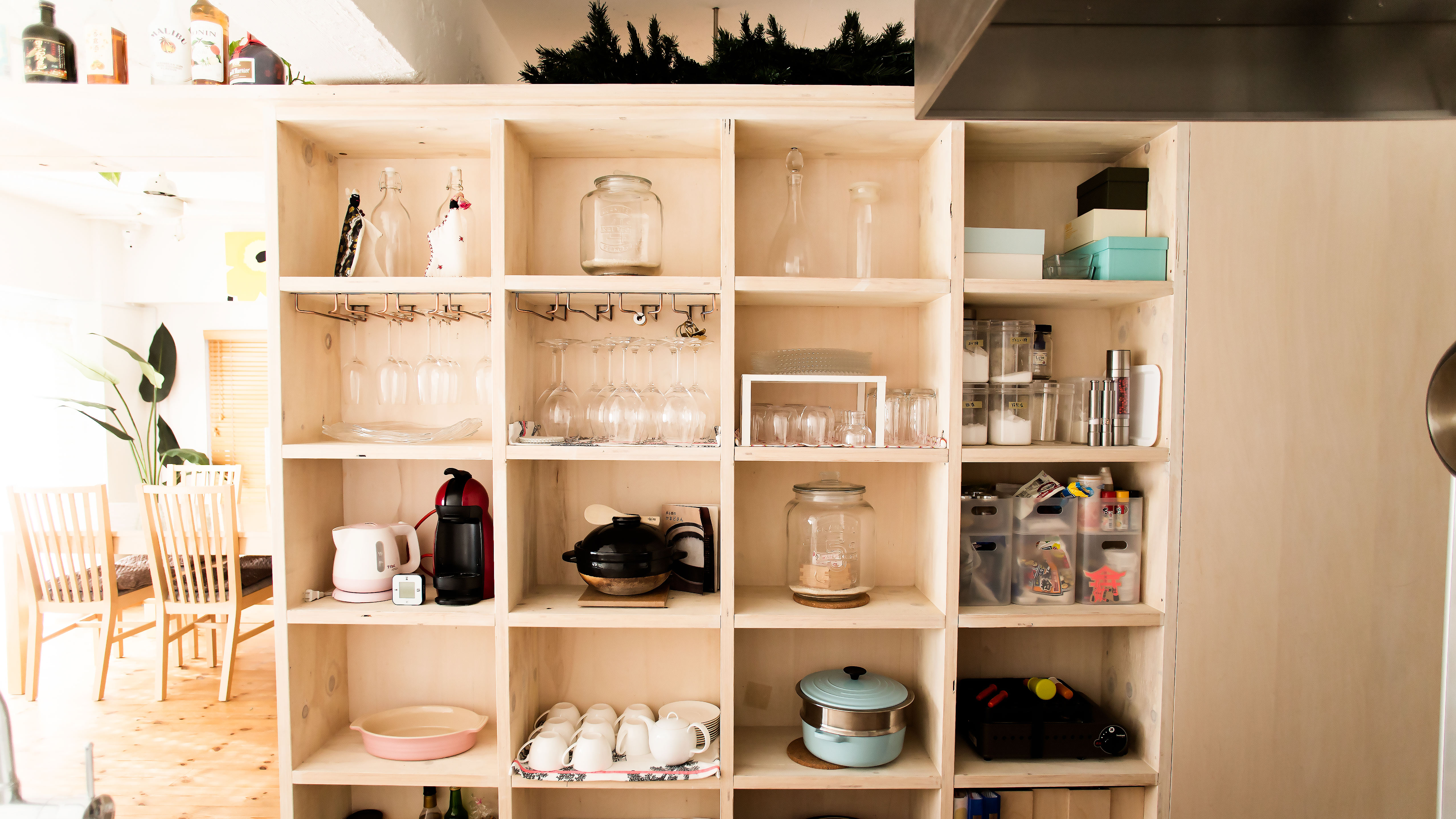
Just because it’s crockery, it doesn’t mean it can’t also be art. Many serving plates and specialty pieces of china are beautiful to look at and have functioned as ornaments for centuries. However, even everyday crockery can double as decor in your home, especially if the pieces reflect your general taste and are in good condition. Instead of hiding your prettiest plates inside a cabinet, consider storing them on open shelving for everyone to see. An added benefit is that they are then even more accessible, which is ideal for your favorite coffee mug or go-to plate.
Open shelving is easier to install than new cabinets, which makes it a useful choice if you’re able to do some work on your kitchen but can’t commit to a full renovation. Shelves are also easily customizable to fit any aesthetic and any spare bit of space in your kitchen. Smaller areas could be used to create a kind of coffee bar, only storing mugs and milk jugs, while a large wall could accommodate a range of dishes. This is a great way to fill up empty wall space with decor you already have.
6. Make corner spaces and countertops work for you
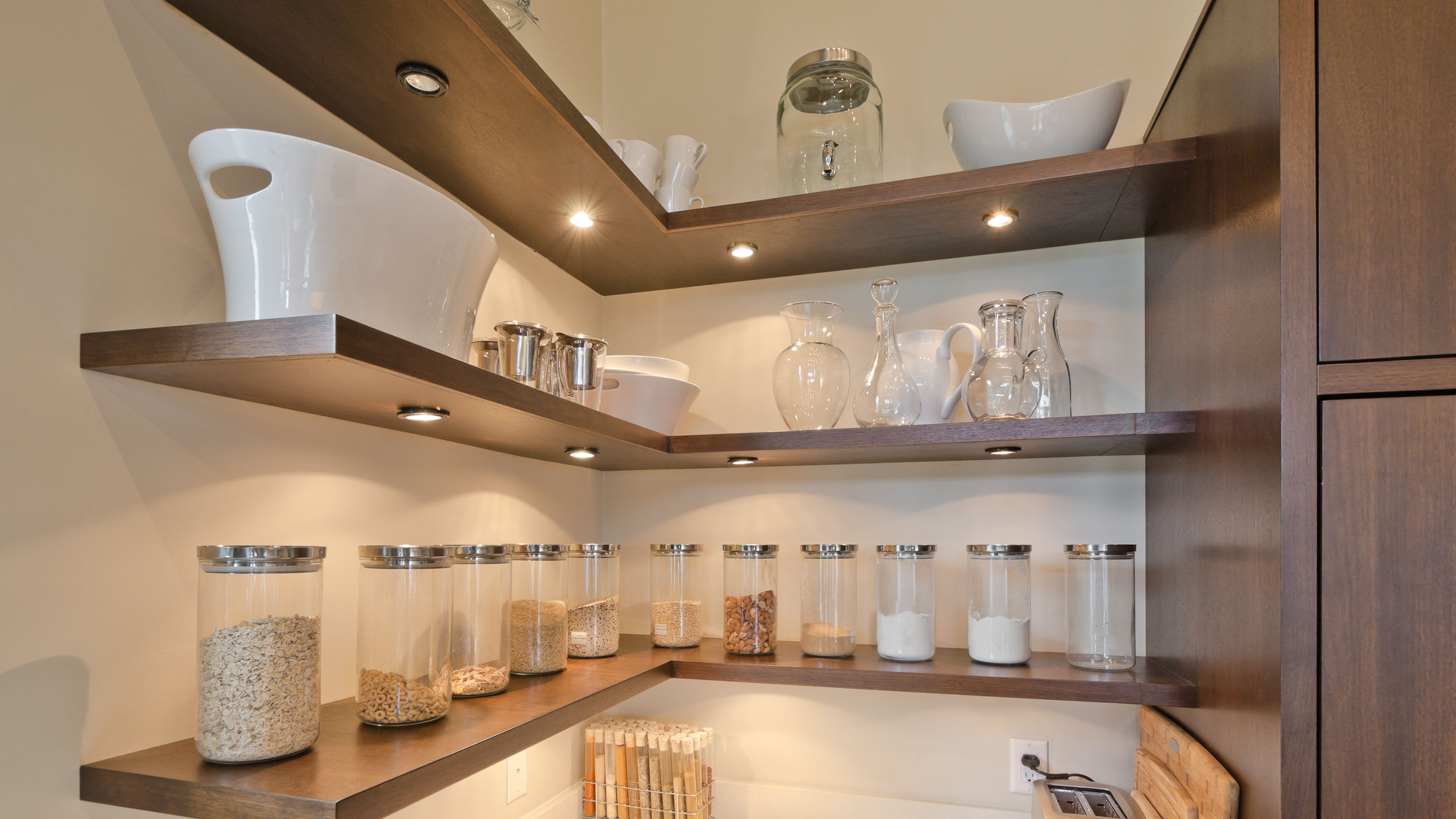
If your countertop runs to the edge of a wall, you’ve likely had to decide which wall surface to place your storage against — while the other wall sits empty. If you are pushed for space in your kitchen or are simply looking for a more aesthetic storage choice, consider deploying a corner shelf. These are designed to slot into a corner and face outwards into the room, making it easier to access your items and reducing the overall shelf footprint. Corner shelves are particularly helpful when you have a large amount of free space between the countertop and an overhead cabinet, but can even work wonders in smaller spaces.
Countertop corners are a great place to store attractive items that get a lot of daily use, from spices and tea blends to mugs and cereal bowls. Or go with a theme and create a breakfast station, for easy organization first thing in the morning. Corner shelves tend to have smaller dimensions than a cabinet shelf, so they are better used for mugs, cups or smaller crockery items. This then frees up cabinet space for bigger dishes.
7. Deploy roll-out drawers for extra-deep bottom cabinets
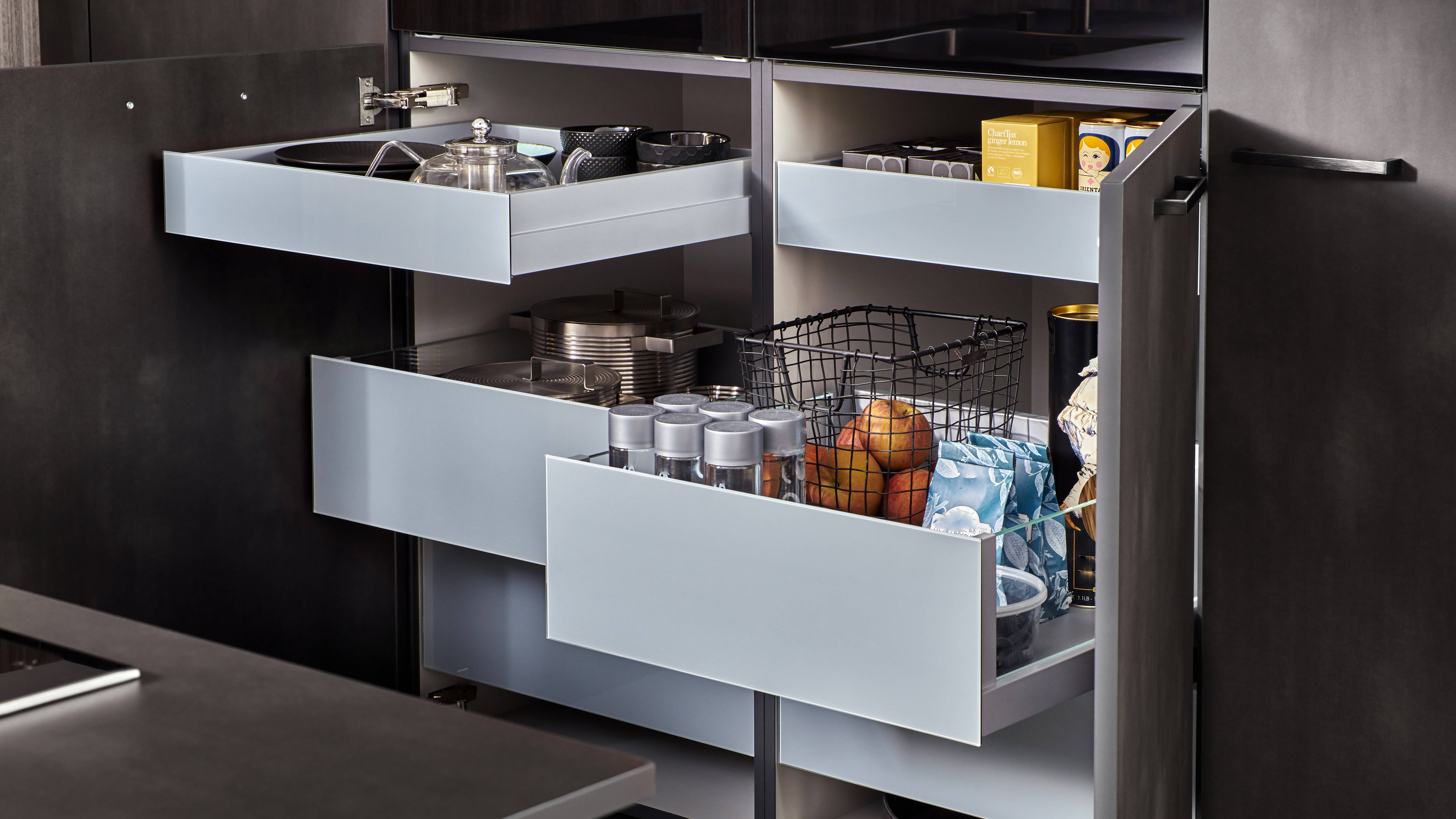
While overhead cabinets are often criticized for not holding enough stuff, cabinets that fit under a countertop are often too deep for practical use. They may be able to hold a lot of items, but it’s frustrating to have to bend down and dig around for what you need — especially if this is happening on a regular basis. Yet you don’t want to not use the extra space, especially if you have filled up the more accessible storage in your kitchen. It can be smart to put your less-frequently used crockery in the back of a bottom cabinet (such as a large serving platter or tagine), but also consider installing a roll-out drawer for easier access.
Roll-out drawers can be designed to accommodate a range of different cabinets and can be easily installed without professional help. Once in place, they fit as much inside as the regular cabinet does, but now you can slide out the drawer for greater convenience. This is particularly useful when the drawer is next to the dishwasher, as it reduces the distance the dishes have to travel — and is a convenient height for children to assist with the task. Heavy crockery is also well-suited to a roll-out drawer, as it may be trickier to remove from the back of a deep cabinet.
You might also be interested in reading How I reorganized my kitchen in a morning — discover my 9 quick and easy tips.
More from Tom's Guide
- Also try these 7 space-saving ways to organize pots and pans
- Plus these 7 space-saving hacks to organize kitchen cabinets
- Cameron Diaz's kitchen is bringing back this 'huge trend' for 2024, say experts — how to get the look

Despite making her home in urban metropolises, Madeleine Streets has been nurturing a green thumb for decades.
Raised by a garden designer, she is putting that childhood education to use by helping others learn how to make their garden bloom, while filling her own New York home with cat-friendly plants.
When not writing about gardening and the outdoors, Madeleine loves to cook, study wine and borrow books from her local library.
